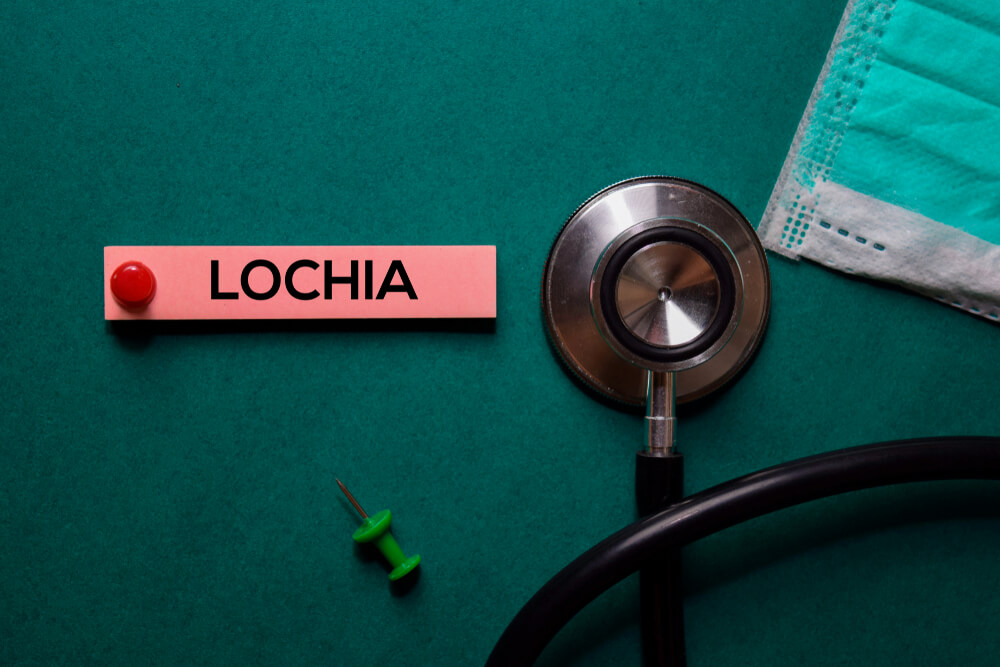Bringing a new life into the world is a miraculous journey, but it is crucial to understand the nuances of postpartum recovery. One aspect that often surprises new mothers is Lochia, the normal postpartum bleeding that occurs after childbirth. Let’s get into more detail about the intricacies of Lochia, discussing its phases, hot long does Lochia last, and effective strategies to expedite recovery.
The questions and concerns mentioned about should always be answered by a trained and experienced medical professional. Finding high quality services of OBGYN in Coral Springs, Florida is an important task for new mothers, especially if you want to know more about vaginal & cesarean deliveries in Coral Springs, FL. Doctors such as Dr. White are amazing examples of dedicated patient care and guidance for new mothers.
What is Lochia?
Lochia, often unfamiliar to many, plays a pivotal role in the postpartum period, representing the body’s intricate process of recovery after childbirth. To comprehend Lochia, one must delve into its composition and significance.
Lochia is essentially a vaginal discharge that emerges following childbirth. It is a dynamic amalgamation of various substances, including blood, uterine tissue, and mucus, intricately orchestrated to cleanse the uterus of remnants left behind after delivery. This discharge is not a cause for alarm but rather a natural and necessary mechanism for the body to restore itself to its pre-pregnancy state.
During pregnancy, the uterus undergoes substantial changes to accommodate the growing fetus. After childbirth, the body initiates a series of processes to shed the excess tissues, blood, and mucus that were vital for supporting the pregnancy. Lochia, in essence, is the body’s way of expelling these remnants, enabling the uterus to contract and return to its normal size.
Phases of Lochia
Understanding the phases of Lochia is crucial for new mothers. The discharge evolves over time, and recognizing these changes aids in gauging the body’s healing progress. Here are the main phases of lochia:
Lochia Rubra (Days 1-3): Lochia Rubra, the initial phase of postpartum bleeding, is characterized by bright red discharge, akin to menstrual blood. Lasting for approximately the first three days after childbirth, this phase indicates the active expulsion of blood and uterine tissue. The vibrant red color is a clear sign of the intense cleansing process taking place in the uterus as it sheds remnants from pregnancy.
During Lochia Rubra, new mothers may experience a heavier flow, necessitating the use of postpartum pads for effective absorption. Recognizing the distinct characteristics of Lochia Rubra is essential for mothers and healthcare providers alike, as it provides insights into the early stages of postpartum recovery.
Lochia Serosa (Days 4-10): Lochia Serosa, spanning from the fourth to the tenth day postpartum, marks the transition in postpartum bleeding from the initial Lochia Rubra phase. During this stage, the discharge takes on a pink or brownish tint, signaling a reduction in the volume of blood and uterine tissue being expelled.
Lochia Serosa is indicative of the ongoing healing process within the uterus as it gradually returns to its pre-pregnancy state. New mothers may notice a lighter flow during this phase, reflecting the diminishing intensity of postpartum bleeding. It is a crucial period as the body continues its natural course of recovery, and understanding the characteristics of Lochia Serosa aids in gauging the progress of postpartum healing.
Lochia Alba (After 10 days): Lochia Alba, the final phase of postpartum bleeding, typically sets in after the tenth day following childbirth. Recognized by a yellowish or white discharge, this stage signifies the concluding steps of the body’s healing process. Lochia Alba indicates that the uterus has successfully purged the remnants of pregnancy, and the postpartum journey is nearing its completion.
During this phase, the discharge becomes significantly lighter, reflecting the reduction of blood and tissue expelled from the uterus. Understanding Lochia Alba is essential as it marks the culmination of the postpartum bleeding process, affirming that the body has effectively returned to a non-pregnant state.
How Long Does Lochia Last?
One common question among new mothers is, “How long does Lochia last?”. The duration of Lochia, the postpartum discharge, varies among women, and understanding this timeline is crucial for new mothers. In general, Lochia can last for about four to six weeks after childbirth. The duration is influenced by several factors, including the mode of delivery, overall health, and individual variations in the body’s healing process.
Vaginal deliveries may have a slightly shorter recovery period compared to cesarean sections. It is important to underlines that Lochia progresses through distinct phases each with its own characteristics, as you have read previously.
Normal Postpartum Bleeding
Experiencing postpartum bleeding is entirely normal, but distinguishing between normal and abnormal bleeding is crucial. Lochia is expected to follow a gradual pattern of change, from red to pink to white or yellow, indicating the body’s natural healing progression.
How to Stop Postpartum Bleeding Faster?
While Lochia is a natural part of postpartum recovery, there are ways to support the body in healing and potentially expedite the process. Here are some popular strategies which can help you:
Stay Hydrated: Staying hydrated is crucial for postpartum recovery as it supports overall health and aids in the body’s healing processes. Adequate hydration is especially important for new mothers who may be breastfeeding, as it helps maintain optimal milk production and quality. Drinking plenty of water also ensures proper blood circulation, contributing to a smoother recovery after childbirth.
- Rest and Recovery: Prioritizing rest and recovery is paramount for new mothers during the postpartum period. Adequate rest allows the body to recuperate from the physical demands of childbirth, promoting healing and reducing stress. Embracing a mindful approach to rest and recovery is essential for a smoother postpartum journey and overall well-being.
- Nutrient-Rich Diet: Maintaining a nutrient-rich diet is crucial for postpartum recovery, providing the essential vitamins and minerals needed for healing and energy. New mothers should focus on a well-balanced intake of proteins, iron, calcium, and vitamin C to support tissue repair and replenish nutrients lost during childbirth. Incorporating a variety of fruits, vegetables, lean proteins, and whole grains into the diet ensures a diverse range of nutrients, contributing to overall health during the postpartum period.
- Gentle Exercise: Engaging in gentle exercise is beneficial for postpartum recovery, promoting blood circulation and aiding in overall well-being. Activities like postpartum yoga or walking are excellent choices as they are low-impact and can be adapted to individual fitness levels. Incorporating gentle exercises into a postpartum routine helps strengthen core muscles, alleviate stress, and gradually reintroduce physical activity after childbirth.
- Follow Healthcare Provider’s Advice: Regular check-ups with your healthcare provider are crucial. Follow their advice on postpartum care, including any prescribed medications.
Conclusion
In conclusion, understanding Lochia and normal postpartum bleeding is vital for new mothers. Embracing the body’s natural healing process while incorporating healthy habits can contribute to a smoother recovery. Remember, each woman’s journey is unique, and consulting with healthcare professionals ensures personalized guidance for a safe and speedy postpartum recovery.
Contact Our Center!
If you are still left with question such as how to stop postpartum bleeding faster, or what to do when the bleeding occurs, pick up the phone and call our experts. We are here for you so do not hesitate and let us help you!


